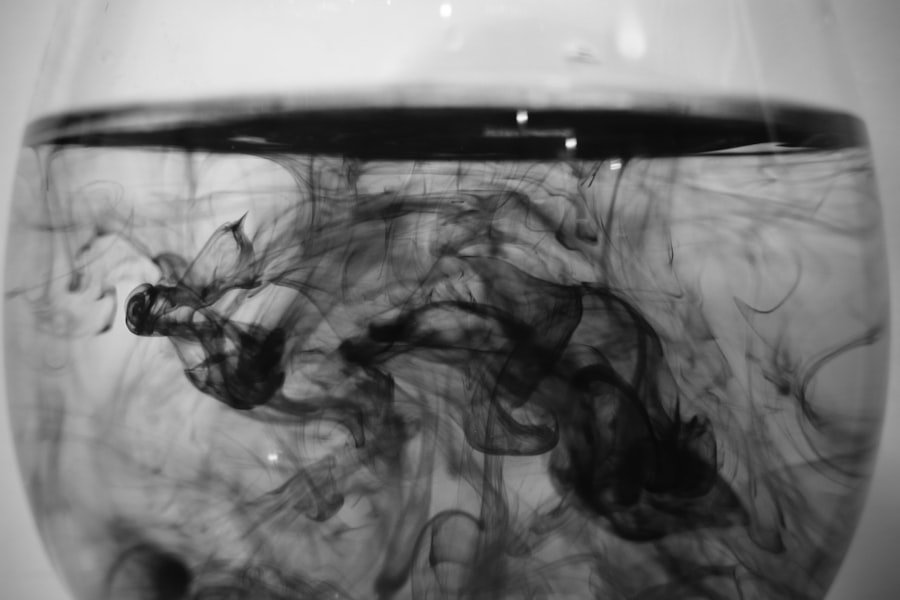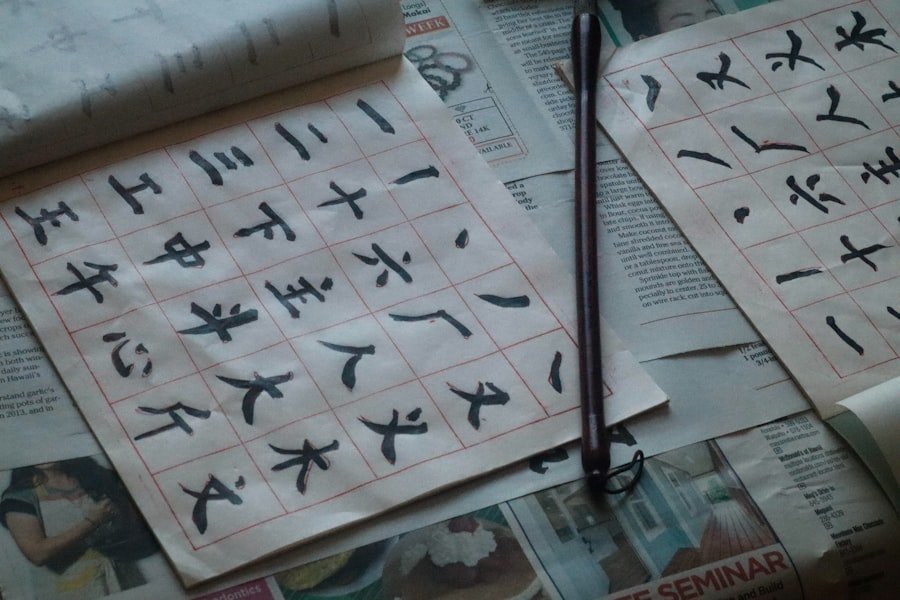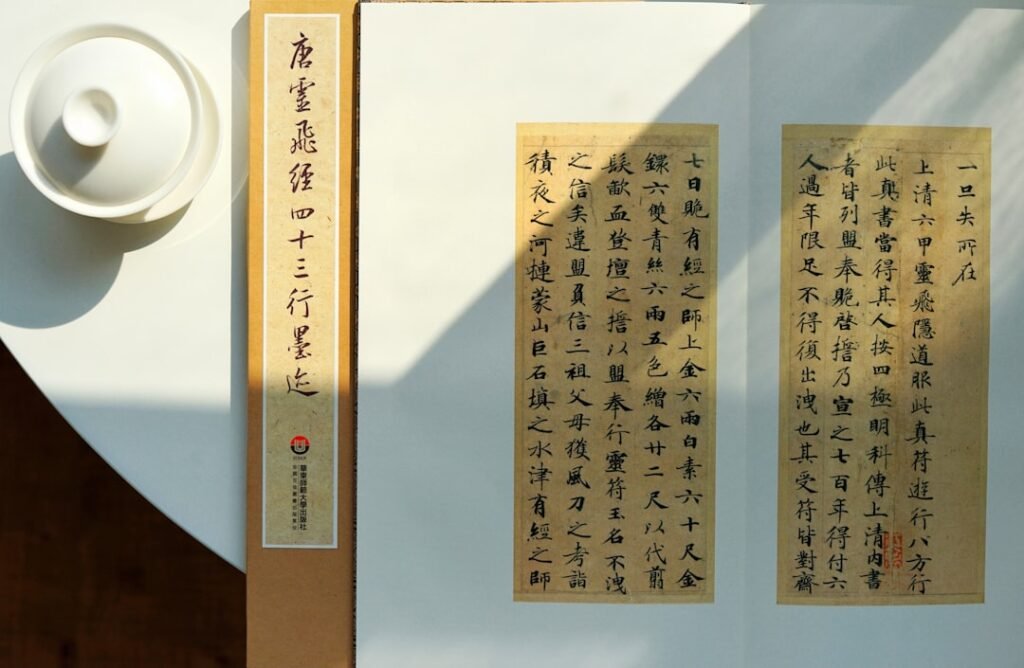Chinese brush painting, or “guohua,” is a time-honoured tradition that encapsulates the essence of Chinese culture and philosophy. This art form, which dates back thousands of years, is not merely about creating beautiful images; it is a profound expression of the artist’s inner self and a reflection of their understanding of nature. The delicate strokes of the brush, the choice of colours, and the composition all come together to create a harmonious piece that speaks to the viewer on multiple levels.
Unlike Western painting techniques that often focus on realism and detail, Chinese brush painting embraces abstraction and spontaneity, allowing the artist to convey emotions and ideas through fluid brushwork. At its core, Chinese brush painting is an intricate dance between the artist and their medium. The brush itself becomes an extension of the artist’s hand, allowing for a unique interplay of control and freedom.
Each stroke is imbued with intention, and the process of painting becomes a meditative practice that encourages mindfulness and presence. As one delves deeper into this art form, they discover that it is not just about the final product but also about the journey taken to create it. This journey is rich with lessons in patience, discipline, and self-discovery, making Chinese brush painting a truly transformative experience. Master the art of Chinese calligraphy. Enroll now at the LC Chinese School in Oslo.
Table of Contents
ToggleSummary
- Chinese brush painting is a traditional art form that requires patience and discipline to master.
- Patience and discipline are essential philosophies in Chinese brush painting, reflecting the values of traditional Chinese culture.
- Techniques and tips for developing patience in Chinese brush painting include controlled breathing and mindfulness.
- Discipline in Chinese brush painting involves mastering brush strokes and techniques through dedicated practice.
- Embracing mistakes and imperfections is a valuable lesson in patience and an integral part of Chinese brush painting.
Understanding the Philosophy of Patience and Discipline in Chinese Brush Painting
The philosophy underpinning Chinese brush painting is deeply rooted in the concepts of patience and discipline. These two virtues are not merely desirable traits; they are essential components of the artistic process. Patience allows the artist to take their time, to observe the world around them, and to appreciate the subtleties of nature.
It encourages a slower pace, fostering a deeper connection with the subject matter. In contrast, discipline provides the structure needed to hone one’s skills and techniques. It is through disciplined practice that an artist can master the brush and develop their unique style.
In many ways, patience and discipline are intertwined in the practice of Chinese brush painting. An artist must cultivate patience to endure the long hours of practice required to perfect their technique. This often involves repetitive exercises that may seem tedious at first but are crucial for building muscle memory and confidence.
Discipline, on the other hand, ensures that the artist remains committed to their craft, even when faced with challenges or setbacks. Together, these qualities create a solid foundation for artistic growth and self-improvement.
Developing Patience in Chinese Brush Painting: Techniques and Tips

Developing patience in Chinese brush painting is a gradual process that requires intentional practice and mindfulness. One effective technique is to set aside dedicated time for painting without distractions. This allows the artist to immerse themselves fully in the experience, fostering a sense of calm and focus.
During these sessions, it is essential to approach each stroke with intention, taking time to breathe and centre oneself before picking up the brush. This mindful approach not only enhances the quality of the work but also cultivates a deeper appreciation for the art form. Another helpful tip for developing patience is to embrace the concept of “slow painting.” This involves taking time to observe the subject matter closely before beginning to paint.
By studying the shapes, colours, and textures, artists can gain a greater understanding of what they wish to convey on paper. Additionally, practising simple exercises such as repetitive strokes or basic forms can help build confidence and patience over time. These exercises serve as a reminder that mastery comes not from rushing but from consistent effort and dedication.
The Role of Discipline in Chinese Brush Painting: Mastering the Art
Discipline plays a pivotal role in mastering Chinese brush painting. It is through disciplined practice that artists can refine their techniques and develop their unique voice within this ancient art form. Establishing a regular painting routine is crucial; this could involve setting aside specific times each week dedicated solely to practice.
Consistency is key, as it allows artists to track their progress and identify areas for improvement. Moreover, discipline extends beyond mere practice; it also encompasses the willingness to learn from others. Engaging with experienced artists or attending workshops can provide invaluable insights into techniques and philosophies that may not be readily apparent through self-study alone.
By remaining open to feedback and guidance, artists can further enhance their skills while cultivating a disciplined approach to their craft.
Embracing Mistakes and Imperfections: A Lesson in Patience
In the world of Chinese brush painting, mistakes are not seen as failures but rather as opportunities for growth and learning. Embracing imperfections is an essential lesson in patience; it teaches artists to let go of their desire for perfection and instead focus on the beauty of spontaneity. Each stroke carries its own story, and even those that may not align with the artist’s original vision can contribute to a piece’s overall character.
This acceptance of imperfection encourages artists to approach their work with a sense of playfulness rather than rigidity. By allowing themselves to experiment freely without fear of making mistakes, they can discover new techniques and styles that resonate with them on a deeper level. Ultimately, this mindset fosters resilience and adaptability—qualities that are invaluable not only in art but also in life.
The Importance of Practice and Repetition in Chinese Brush Painting

Practice and repetition are fundamental aspects of mastering Chinese brush painting. Just as a musician must practise scales or a dancer must rehearse movements, an artist must engage in repetitive exercises to build muscle memory and refine their skills. This process may involve creating countless versions of a single stroke or spending hours perfecting a particular technique.
While it may seem monotonous at times, this repetition is essential for achieving mastery. Moreover, regular practice allows artists to explore different styles and techniques within Chinese brush painting. By experimenting with various approaches—such as ink wash or colour application—they can discover what resonates most with them personally.
This exploration not only enhances their technical abilities but also deepens their understanding of the art form as a whole.
Cultivating Patience and Discipline Through the Study of Traditional Chinese Art
The study of traditional Chinese art offers a rich tapestry of knowledge that can significantly enhance one’s practice of brush painting. Engaging with historical works allows artists to appreciate the evolution of techniques and styles over centuries while gaining insight into the philosophies that underpin this art form. By immersing themselves in traditional practices, artists can cultivate both patience and discipline as they learn from masters who have come before them.
Additionally, studying traditional art forms encourages artists to reflect on their own creative journeys. It prompts them to consider how they can incorporate elements from historical works into their own practice while remaining true to their unique voice. This balance between tradition and innovation fosters a sense of respect for the past while inspiring new directions for artistic exploration.
Finding Balance and Harmony Through the Way of the Chinese Brush
Finding balance and harmony is at the heart of Chinese brush painting. The very act of painting becomes a meditative practice that encourages artists to connect with their inner selves while also engaging with nature’s rhythms. Each stroke represents a moment in time—a fleeting expression that captures both movement and stillness simultaneously.
This duality reflects the broader philosophy of yin and yang, where opposites coexist harmoniously. As artists learn to navigate this balance within their work, they also cultivate a sense of equilibrium in their lives outside of art. The principles learned through brush painting—such as mindfulness, patience, and discipline—can be applied to various aspects of daily life, fostering a greater sense of harmony overall.
The Connection Between Chinese Brush Painting and Meditation
The connection between Chinese brush painting and meditation is profound. Both practices encourage mindfulness—a state of being fully present in the moment without judgment or distraction. When an artist approaches their work with this meditative mindset, they can tap into a deeper wellspring of creativity and inspiration.
Moreover, the rhythmic motions involved in brush painting mirror those found in meditation practices such as tai chi or qigong. The fluidity of movement allows artists to enter a state of flow where time seems to dissolve away, leaving only the act of creation behind. This meditative quality not only enhances artistic expression but also promotes mental clarity and emotional well-being.
Applying the Principles of Patience and Discipline in Daily Life Through Chinese Brush Painting
The principles learned through Chinese brush painting extend far beyond the canvas; they can be applied to various aspects of daily life. Patience teaches individuals how to navigate challenges with grace while maintaining a sense of calm amidst chaos. Discipline instils a sense of commitment towards personal goals—whether they be artistic or otherwise.
By integrating these principles into everyday routines—such as setting aside time for reflection or engaging in mindful practices—individuals can cultivate resilience and adaptability in all areas of life. The lessons learned through brush painting become tools for navigating life’s complexities with greater ease.
The Enduring Legacy of Chinese Brush Painting: Lessons in Patience and Discipline
The enduring legacy of Chinese brush painting lies not only in its aesthetic beauty but also in its profound teachings about patience and discipline. As artists continue to explore this ancient art form today, they carry forward centuries’ worth of wisdom that transcends cultural boundaries. At institutions like LC Chinese School in Oslo, students have the opportunity to immerse themselves in this rich tradition through dedicated courses focused on calligraphy and brush painting techniques.
These classes provide an invaluable platform for individuals seeking to deepen their understanding while cultivating essential virtues such as patience and discipline within their artistic journeys. In conclusion, Chinese brush painting serves as both an art form and a pathway towards personal growth—inviting practitioners to embrace patience, discipline, and mindfulness as they navigate their creative journeys while enriching their lives along the way.
Master the art of Chinese calligraphy. Enroll now at the LC Chinese School in Oslo.







